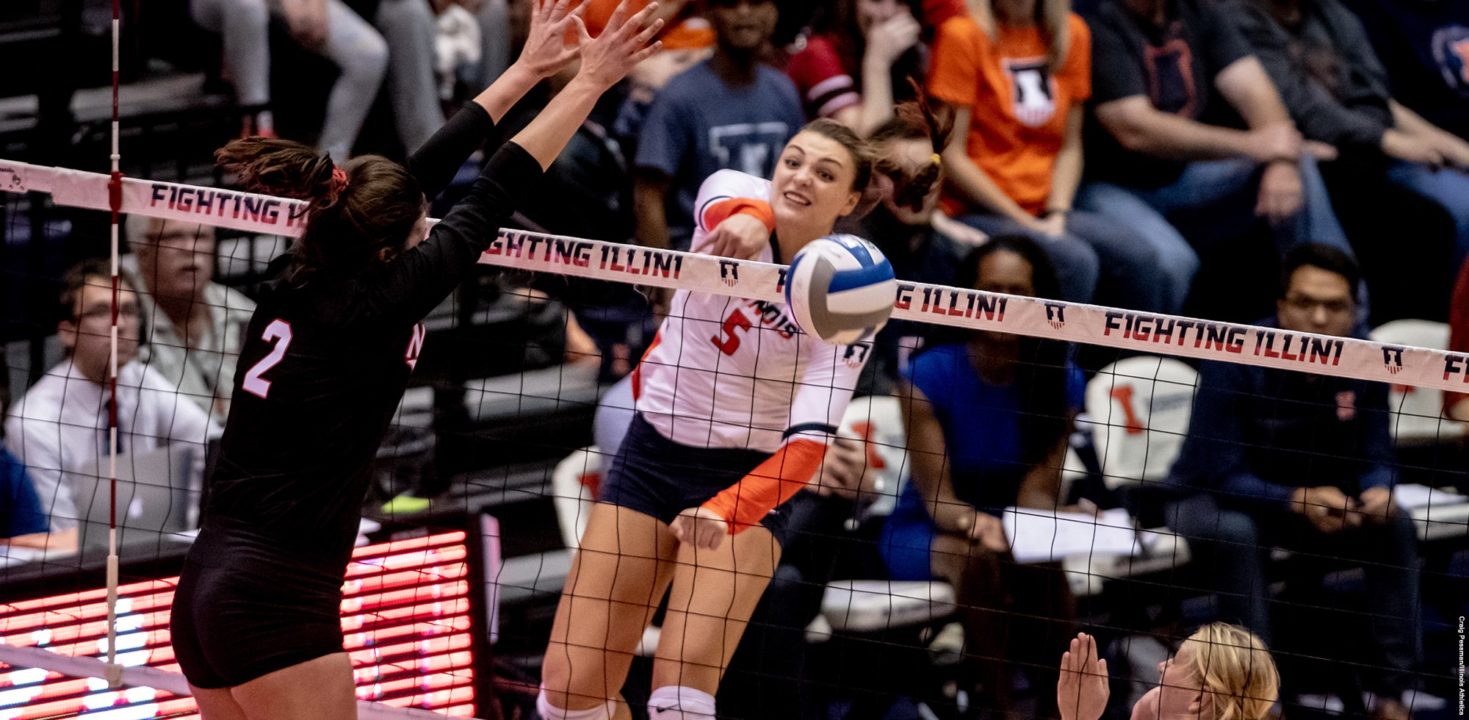There are 32 conferences in Division I women’s volleyball, and there’s not much dispute that the Big Ten and the Pac-12, in some order, are the two best of them. Both in terms of top-end quality, and depth, nobody presents the gauntlet, top-to-bottom, that those two conferences do.
The order of the two conferences, however, is a topic of much debate. With the reveal of the first RPI rankings of the season, we can cannot settle the debate yet, because the two conferences rank in a different order, depending on the metric used.
The reason we use RPI for these averages is simple: it’s the only ranking that goes deep enough to evaluate an entire conference, and to evaluate every conference.
If we look at the average ranking of each team in the two conferences, the Pac-12 reigns supreme. With Stanford at #1, and all 12 of their teams ranked in the top 100 nationally (Cal is ranked 98th, Oregon State is ranked 97th), their average is pulled higher than the Big Ten, which has 13 teams ranked in the top 68 of the country, but the 14th, Rutgers, sitting at just 178th in the RPI ratings.
When measuring the conferences a different way, by median rank, however, the Big Ten jumps to the top. The median, which looks at the “middle” number of each data set, smooths the extremes of the data set and focuses on the middle teams. Of course, these aren’t huge data sets, so this isn’t a perfect measure either.
Another highlight of the data is the improvements in the ACC. In past seasons, they’ve been back-and-forth with the WCC for 5th-best conference in the country. In spite of BYU’s impressive run, the ACC still is 8 points ahead of the WCC by ‘average ranking.’
The RPI system, used in basketball, baseball, softball, hockey, soccer, lacrosse, and volleyball, is designed to help committees select teams for the 64-team NCAA tournament as well as the seeding of those teams once they get there.
The index comprises a team’s winning percentage (25%), its opponents’ winning percentage (50%), and the winning percentage of those opponents’ opponents (25%).
As compared to the VolleyMob Power Rankings, the RPI rankings calculated mathematically. The intent is to create a more objective ranking to juxtapose the subjectivity of the AVCA poll, though by their nature there is still some subjectivity as to which numbers matter more than others in their calculations.
Conference Average RPI Rankings:
| CONFERENCE | # of Teams | Average Rank | Median Rank | |
| 1. | Pac-12 | 12 | 38.66666667 | 33.5 |
| 2. | Big Ten | 14 | 41.5 | 30 |
| 3. | Big 12 | 9 | 51.33333333 | 53 |
| 4. | SEC | 13 | 65.46153846 | 51 |
| 5. | ACC | 15 | 80.73333333 | 74 |
| 6. | WCC | 10 | 88.8 | 60.5 |
| 7. | AAC | 12 | 112.0833333 | 123.5 |
| 8. | MVC | 10 | 126.5 | 130 |
| 9. | Big West | 9 | 131.5555556 | 106 |
| 10. | WAC | 9 | 137.1111111 | 99 |
| 11. | Big East | 10 | 143.7 | 164.5 |
| 12. | MWC | 11 | 148.2727273 | 127 |
| 13. | CAA | 9 | 153.5555556 | 180 |
| 14. | C-USA | 13 | 156.3076923 | 148 |
| 15. | Ivy League | 8 | 169.75 | 156 |
| 16. | Sun Belt | 12 | 185.1666667 | 183.5 |
| 17. | MAC | 12 | 185.3333333 | 175.5 |
| 18. | SoCon | 9 | 189 | 223 |
| 19. | Atlantic 10 | 10 | 190.2 | 217 |
| 20. | Big Sky | 11 | 202.0909091 | 197 |
| 21. | Horizon | 9 | 205.5555556 | 196 |
| 22. | Summit League | 9 | 208.2222222 | 194 |
| 23. | ASUN | 9 | 209.6666667 | 209 |
| 24. | Patriot | 9 | 214 | 242 |
| 25. | Southland | 13 | 220 | 219 |
| 26. | Big South | 10 | 229 | 242.5 |
| 27. | OVC | 12 | 233.5 | 262 |
| 28. | America East | 7 | 250.4285714 | 263 |
| 29. | NEC | 8 | 253.625 | 264 |
| 30. | MAAC | 10 | 290.7 | 299 |
| 31. | MEAC | 12 | 302.3333333 | 314.5 |
| 32. | SWAC | 10 | 321.1 | 323.5 |

Just curious. The SEC has 13 teams, not 9. Was this a typo or did you not calculate the other 4 teams in the SEC rankings. Thanks in advance.
Good catch, thanks Andrew. Was just a sort glitch in my spreadsheet – the average and median numbers were right, the number of teams just wasn’t transferred accurately. Should be up-to-date now.